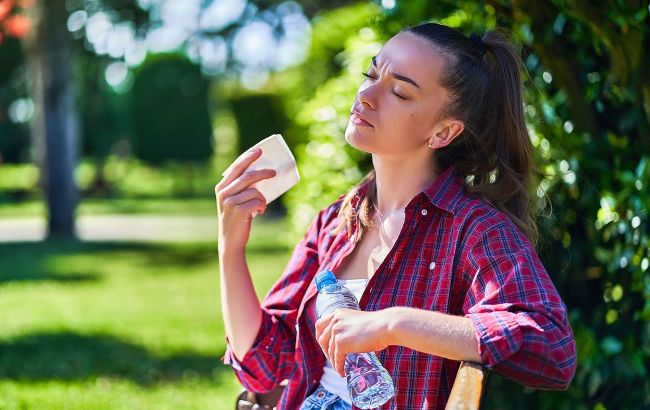Heatstroke: How to recognize early symptoms, help and prevention
 Photo: What you should do if you have a heatstroke (freepik.com)
Photo: What you should do if you have a heatstroke (freepik.com)
An incredible heatwave has arrived in Europe, with temperatures reaching up to +40 degrees Celsius in some places. This poses a danger to everyone, especially those with chronic health issues.
Ukrainian doctor and nutritionist Oleg Shvets gives pieces of advice on how to protect yourself from heatstroke and its symptoms.
What you need to know about heatstroke
Solar radiation is very high during the summer months, increasing the risk of overheating and heatstroke. Overheating and heat exhaustion can usually be avoided if a person can stay in a cool place for at least 30 minutes. However, immediate medical intervention is necessary if heatstroke symptoms occur.
Symptoms of overheating
Signs of heat exhaustion due to moderate overheating include fatigue, dizziness, headache, nausea, and excessive sweating. The skin may become pale or clammy, rashes may appear, and cramps in the hands, legs, and abdomen may occur, along with rapid breathing or heartbeat, high temperature, severe thirst, and weakness.
Symptoms of heat exhaustion are often similar in adults and children, although irritability may also be observed in children.
If you have symptoms of heat exhaustion, you need to move to a cool place immediately and drink plenty of water.
What to do in case of heatstroke
If you or someone else experiences symptoms of overheating, follow these 4 steps:
- Move the person to a cool place.
- Remove excess clothing, such as jackets or socks.
- Give them a rehydration drink or cool water.
- Cool the skin: spray or wipe it with cool water. Cold packs wrapped in cloth can also be used under the armpits or on the neck.
Stay with the person until they feel better. They should start to cool down and feel improvement within 30 minutes.
When help is needed
Heatstroke is the most severe form of heat-related illness and results from a disruption in thermoregulation that can be life-threatening. Call emergency services if you notice these signs:
Feeling unwell after 30 minutes of rest in a cool place, despite cooling and fluid intake.
- Very high body temperature.
- Hot, dry skin that may redden.
- Rapid heartbeat.
- Rapid breathing or shortness of breath.
- Confusion and loss of coordination.
- Seizures.
- Loss of consciousness.
Preventing overheating
There is a high risk of heat exhaustion or heatstroke during hot weather or intense physical activity. To avoid this:
- Drink more cold fluids, especially if you are active or exercising.
- Wear light, loose clothing.
- Avoid being in the sun from 11:00 AM to 3:00 PM.
- Avoid alcohol consumption.
- Avoid excessive physical exertion.
- If you are indoors on a very hot day, close curtains and windows if the outside temperature is higher than indoors.
Also, read about when and how to sunbathe in the summer to get vitamin D without getting sunburned.
This material is for informational purposes only and should not be used for medical diagnosis or self-treatment. Our goal is to provide readers with accurate information about symptoms, causes, and methods of detecting diseases. RBС-Ukraine is not responsible for any diagnoses that readers may make based on materials from the resource. We do not recommend self-treatment and advise consulting a doctor in case of any health concerns.

